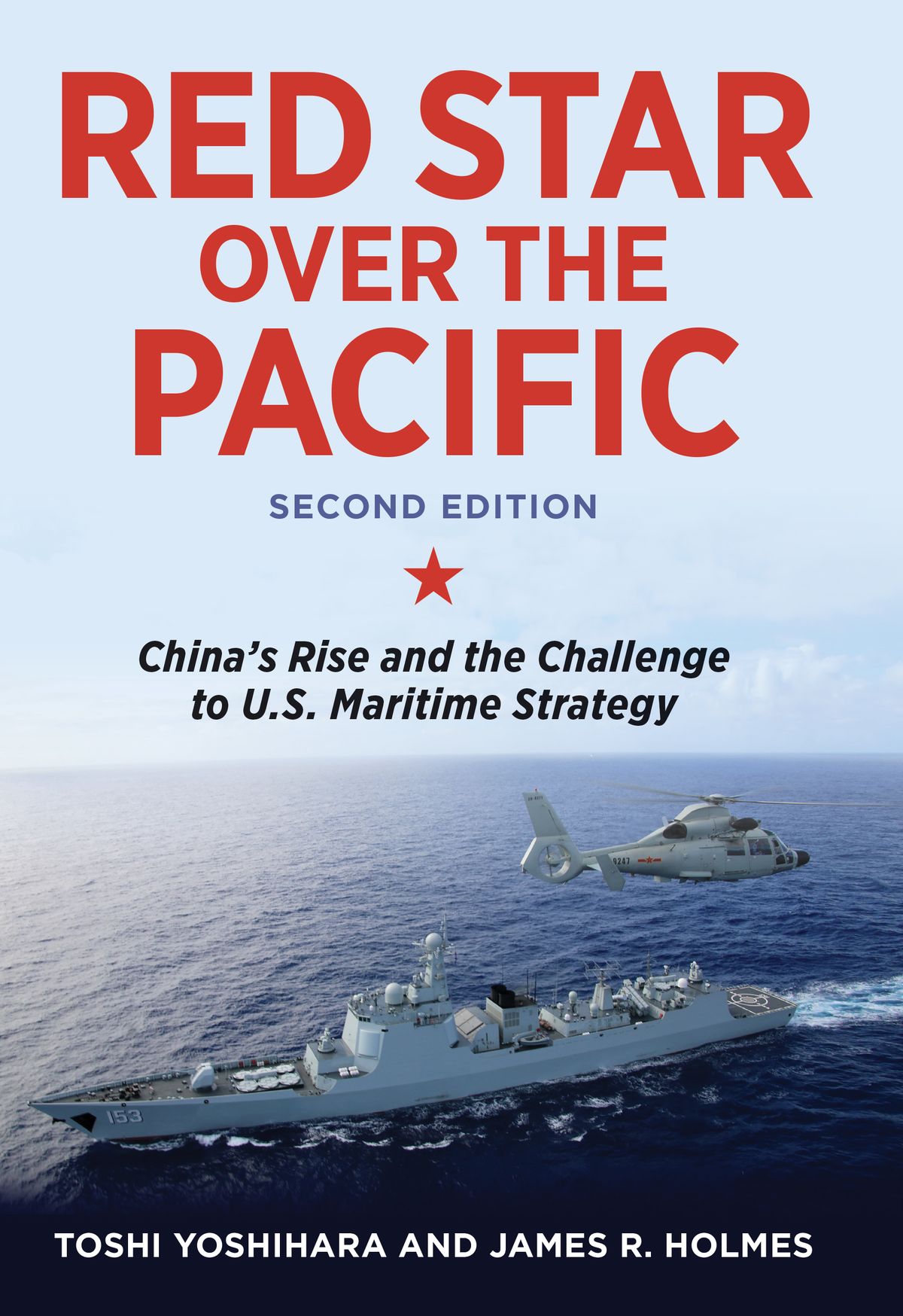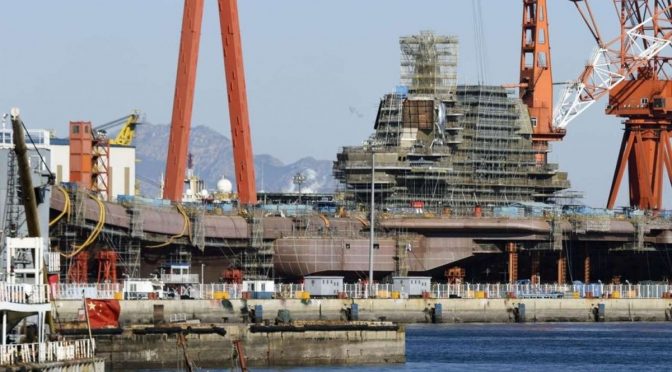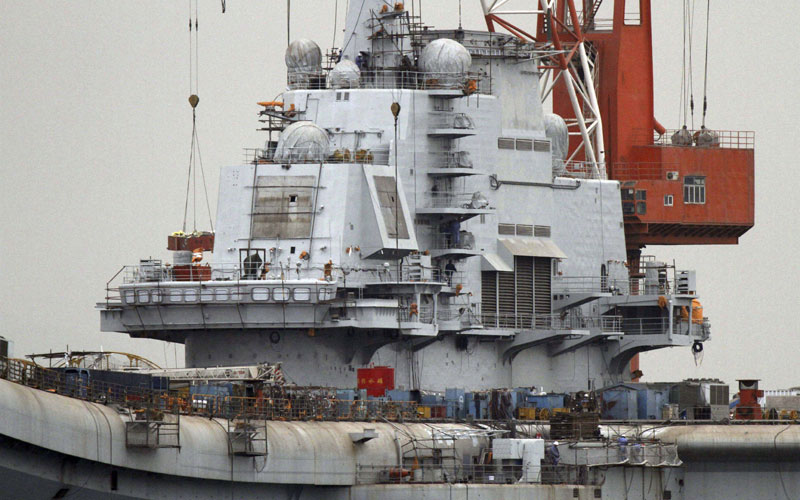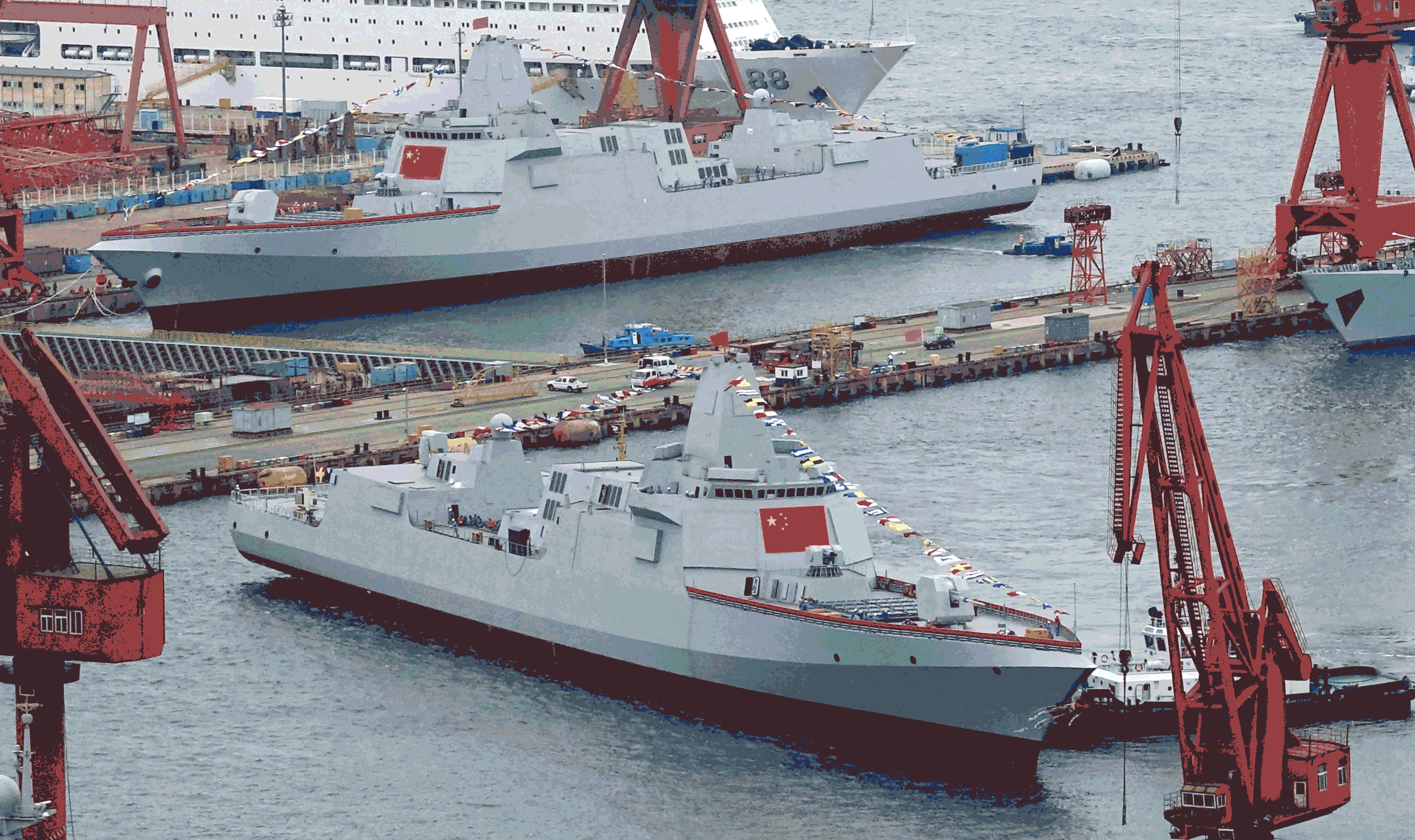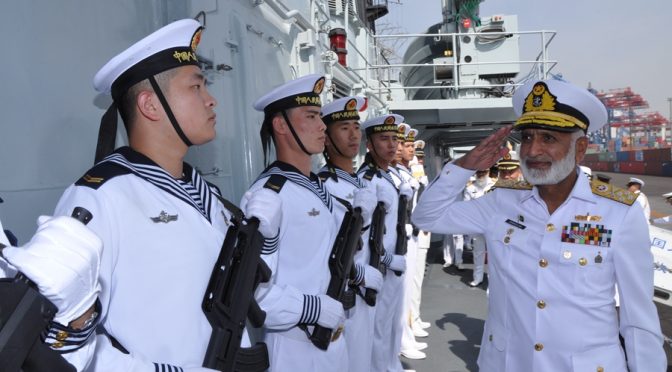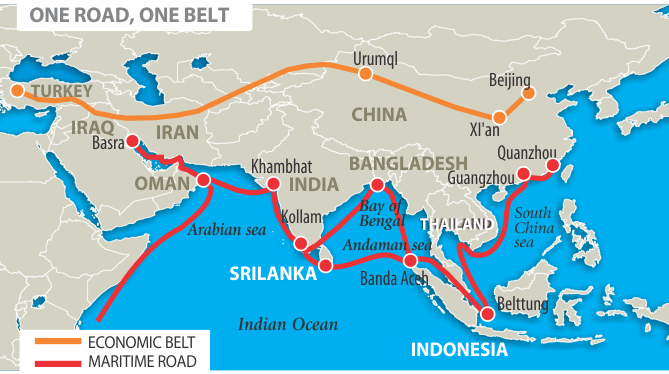By Dmitry Filipoff
CIMSEC had the opportunity to discuss the second edition of Red Star Over the Pacific with James Holmes, current J. C. Wylie Chair of Maritime Strategy at the U.S. Naval War College. In this conversation Holmes lays out how the theories of Alfred Thayer Mahan helped inform China’s maritime rise, how China built a formidable naval warfighting capability, and how the U.S. and its allies can more effectively deter China militarily.
Q: Throughout the book you note that China’s approach to building maritime power is very comprehensive and “Mahanian” in nature. What do you mean by this, and how has maritime power contributed to China’s rise as a great power?
JH: China’s rise is avowedly Mahanian in terms of both purpose and power. Sea power proponents in Beijing and places like that will tell you so. In terms of purpose, Mahan declares that commercial, diplomatic, and military access to important trading regions is the uppermost goal of maritime strategy, bar none. Because of China’s exceptionally forbidding strategic geography, Chinese Communist Party (CCP) chiefs have to worry about access from the time a ship leaves harbor in East Asia until the time it docks in an Indian Ocean, Persian Gulf, or European seaport. Hence Beijing’s effort to erect an anti-access buffer to hold the U.S. Navy at a distance: it eases the challenge of gaining access from the China seas to the Western Pacific, Indian Ocean, and points beyond.
In terms of power, Mahan’s famous six “determinants” of sea power indicate which would-be seafaring societies have the right stuff to go to sea in the search for commercial, diplomatic, and military access and the prosperity and power it promises. The determinants also suggest what the leadership of a prospective seafaring society should do to hasten the process along and make it more robust, such as enacting laws and policies encouraging people to engage in maritime industries, construct the infrastructure to support merchant and naval fleets, and on and on. His writings describe and prescribe.
It’s important to note that Mahan’s influence on naval operations can, and we believe does, stop with his injunction to seek “command of the sea,” meaning relative supremacy in waters that matter to China. There are many ways to skin a cat. Navies and affiliated joint forces can seek maritime command through a variety of methods, not just by sending out battle fleets for symmetrical force-on-force engagements as in the age of sail, and to a lesser degree, the age of steam. For instance, they can execute an “active defense” until such time as they are strong enough to venture a decisive battle. People’s Liberation Army (PLA) strategists read Corbett and approve of his concept of active defense, but more importantly, active defense has been graven on the CCP’s way of strategy and operations since Mao fashioned the concept in the 1930s. Beijing’s 2015 white paper, “China’s Military Strategy,” reaffirms that active defense remains the “essence” of the party’s way of war, just as it was for the Red Army during the Chinese civil war. China’s methods are nothing new, even though it uses different implements to put them into effect at sea.
So people should not make too much of the operational and tactical implications of Mahan’s writings for China’s navy. They should pay a great deal of attention to what he says about maritime strategy and amassing sea power to execute strategy. These are the ideas to which CCP leaders have declared fealty.
Q: For millennia China was a continental power, primarily focused on land. Now within only the past generation or two has China made a historic transition into becoming a maritime superpower. How did this shift change Chinese strategic thinking and threat perception?
JH: As I noted earlier, maritime strategy rivets attention on the problem of access, and for China that means guaranteed passage between the China seas and the Pacific or Indian ocean first and foremost. CCP leaders are acutely conscious that the first island chain encloses the entire continental crest—no city outflanks it—that U.S. allies or friends occupy the first island chain, and that the United States used the island chain to fetter maritime movement in the Western Pacific throughout the Cold War. So if Beijing seems morbidly obsessed with its geographic plight, that’s because it is. And for good reason. Its worries constitute our opportunity.
Q: In Chapter 4 of the book, you discuss China’s “strategic will” to the sea. What do you mean by strategic will, and how has China’s strategic will to the sea grown over the years?
JH: The term comes from Wolfgang Wegener, an admiral in the World War I German High Seas Fleet and the author of The Naval Strategy of the World War, a blistering critique of Germany’s failure as a sea power and a fine work of sea power theory. Strategic will for Wegener is nothing more than the Nietzschean “will to power” turned to the sea in pursuit of strategic position and a great navy able to seek out key strategic locations to further overseas commerce. We prefer Wegener’s concept to Mahan’s, which is valid but rather static. There’s a real dynamism to the will to power, yet it is also perishable. Wegener is vehement about urging political and naval leaders to rouse and husband strategic will to the sea—which is precisely what CCP leaders have done over the past quarter-century or so as China amasses the trappings of sea power. If only U.S. and allied leaders were as single-mindedly focused and persuasive about seaborne endeavors.
Q: You argue that concepts like active defense and the fortress fleet are core components of China’s maritime warfighting strategy and operational thinking. How may these concepts and others animate China’s prosecution of a future war at sea?
JH: We should be clear about the terminology here. Active defense is a Maoist term and ubiquitous in CCP writings about strategy, operations, and tactics. (It’s far from uncommon in Western writings as well, not just in Corbett’s works but those of Bradley Fiske and many others.)
“Fortress fleet” is a term we use to describe the PLA’s use of shore-based firepower to supplement the power of the battle fleet. The term comes from Mahan’s critique of Russian naval strategy during the Russo-Japanese War of 1904-1905. Russian naval commanders had a bad habit of huddling under the guns of Port Arthur for protection against the superior Imperial Japanese Navy. Mahan deemed this a “radically erroneous” way of naval operations because the range of a gun was so short in those days—a fortress fleet was confined to a very small circle on the map whose range was the effective firing range of a cannon circa 1904-1905. That had all manner of ill effects. But that doesn’t render the concept of shore-based fire support moot. If I have the scouting capability, command and control, and firepower to rain ordnance on an enemy fleet scores, hundreds, or thousands of miles out to sea, exactly what is the objection to a fortress fleet? None whatsoever. You have plenty of sea room to roam while still tapping fire support. You can have the best of both worlds, blue-water mobility plus that great shore-based equalizer.
Bottom line, it is misleading in the extreme to run direct comparisons between the PLA Navy and the U.S. Navy and console ourselves that we remain ahead. If we run comparisons between the fraction of the U.S. Navy that would appear on scene at likely battlegrounds in the Western Pacific and the massed PLA Navy backed by shore-based firepower and we look like we’re behind, well, that reflects reality. It matters not a whit who has the stronger navy overall; it matters who can concentrate the most firepower at scenes of action for as long as it takes to accomplish tactical and operational goals. As Nelson quipped, a ship’s a fool to fight a fort. If Fortress China can reach far out to sea and lend accurate firepower in support of the battle fleet, that’s a discomfiting prospect. Do not give in to the temptation to view maritime competition and warfare solely as a navy-on-navy thing.
Q: You discuss a dichotomy in the orientation of a fleet, where a Mahanian fleet is focused on preparing to secure command of the seas in the event of conflict, and where a post-Mahanian fleet is mostly focused on exploiting command of the seas in peacetime. It appears the Chinese Navy has been developing itself as a Mahanian fleet focused on the high-end fight at the same time the U.S. Navy has been focusing on post-Mahanian missions such as power projection and constabulary functions. How do you compare these two navies through the lens of this dichotomy, and how could a Mahanian/post-Mahanian mismatch between rival fleets create strategic risk?
JH: Here I should give credit to my friend Geoff Till, who articulated the distinction between Mahanian and post-Mahanian navies back in 2007. It’s a cultural mismatch translated into force structure and doctrine. After the Cold War we told ourselves the Soviet Navy was gone and no one would replace it as a peer adversary. So we could lay down arms—the arms needed to fight for command of the sea, anyway—and deemphasize missions such as surface warfare, anti-submarine warfare, and anti-air warfare. We assumed away our first and foremost function, the fight for command—hence “post-Mahanian.”
Meanwhile future challengers resolved to prepare for that fight against a U.S. Navy that had persuaded itself naval history had ended—hence those challengers were “Mahanian.” If a bloody-minded Mahanian fleet backed by shore-based firepower encounters an inattentive post-Mahanian fleet, who wins—even if the material advantage happens to favor the latter?
Never, ever assume away your primary reason for existence. It’s ahistorical for fighting forces, and dangerous in the extreme.
Q: Near the conclusion of the book you argue that American diplomats and troops must prepare themselves for Beijing’s “hyper-Mahanian approach to seapower.” What could such preparations look like as the U.S. calibrates its strategy toward China?
JH: It doesn’t mean reciprocating China’s naval preparations in symmetrical fashion, although a lot of what we must do is regenerate habits, skills, and hardware we need to compete the way we did against the Soviet Navy. That part will look symmetrical. We started delving into an asymmetrical approach back in 2012, after the first edition of Red Star over the Pacific, but before the idea of island-chain defense became common wisdom in journals, think tanks, and the Pentagon. We preached island-chain defense before it was cool. The basic idea is that we need to turn geography, alliances, and asymmetric advantages in hardware and tactics into a decisive strategic edge. If Beijing frets about access, and if we and our allies stand athwart its access to the Western Pacific and Indian Ocean, that constitutes invaluable potential leverage.
In other words, we can mount an anti-access strategy of our own along the first island chain, using submarines, sea mines, unmanned vehicles of various kinds, aircraft, and land-based firepower to seal up the straits between the islands constituting the island chain. We can convert the island chain into a “Great Wall in reverse,” a barrier to Chinese maritime movement rather than an edifice that keeps out China’s foes. Display the capability to do all of that at manageable cost to ourselves and allied governments, and we will have erected a formidable deterrent to CCP mischief. A few weeks back The Economist ran an article about China’s strategic geography, including a nice mention of Red Star over the Pacific, and closed by quoting Professor Hu Bo—one of China’s preeminent maritime strategists—as observing that challenging island-chain defense would be a “suicide mission” for China’s armed forces. We agree—and hope the CCP leadership does as well.
I noted that the PLA Navy need not be Mahanian in its operational and tactical methods, however Mahanian it may be in larger things. The same goes for America and its allies. We can repay Beijing’s anti-access efforts with interest by staging an anti-access strategy of our own—and dare Beijing to undertake Hu’s suicide mission.
Q: What are your predictions for how Chinese maritime power will continue to evolve into the future?
JH: My predictions are usually about as venturesome as Clubber Lang’s in Rocky III: “Prediction? Pain!” In fact, that one probably applies here as well. I think it is safe to say that, barring some black swan-like economic collapse or political revolution, the CCP will remain a serious player at sea. China will not somehow return to port or otherwise revert to being its traditional continental self on the day after the conquest of Taiwan, or whatever. The leadership has connected sea power to sovereignty, to China’s banishment of the century of humiliation, to China’s very sense of itself and its place in the world. You don’t rouse sentiments like that and then let the seaward quest fizzle out from inattention.
So this is a lasting challenge. I think it’s also fair to prophesy—because we see it happening now—that U.S.-China relations will take that competitive swerve we thought the relationship might take when we came out with the first edition, and took a fairly upbeat view. Which is why the second edition has a keener edge to it than the first. The first edition was a plea to take these people seriously; this edition is about getting ready. If we don’t get ready and convince Beijing we are ready, our efforts at deterrence are apt to falter—and we may find ourselves in a very bad place. The hour is late.
Q: Any final thoughts you would like to share?
JH: Just that there is no reason to resign ourselves to failure. In fact, this strategic competition is ours to lose when you take account of geography, our slate of allies compared to China’s, and so forth. Those are all formidable assets. But we do have to get serious about competing and act accordingly. We are trying to come from behind.
James Holmes holds the J. C. Wylie Chair of Maritime Strategy at the Naval War College and served on the faculty of the University of Georgia School of Public and International Affairs. A former U.S. Navy surface-warfare officer, he was the last gunnery officer in history to fire a battleship’s big guns in anger, during the first Gulf War in 1991. He earned the Naval War College Foundation Award in 1994, signifying the top graduate in his class. His books include Red Star over the Pacific, an Atlantic Monthly Best Book of 2010 and a fixture on the Navy Professional Reading List. General James Mattis deems him “troublesome.” The views expressed here are his own.
Dmitry Filipoff is CIMSEC’s Director of Online Content. Contact him at Nextwar@cimsec.org.
Featured Image: Chinese Navy’s 055-class guided missile destroyer Nanchang takes part in a naval parade off the eastern port city of Qingdao, to mark the 70th anniversary of the founding of Chinese People’s Liberation Army Navy, China, April 23, 2019. (Reuters/Jason Lee)


